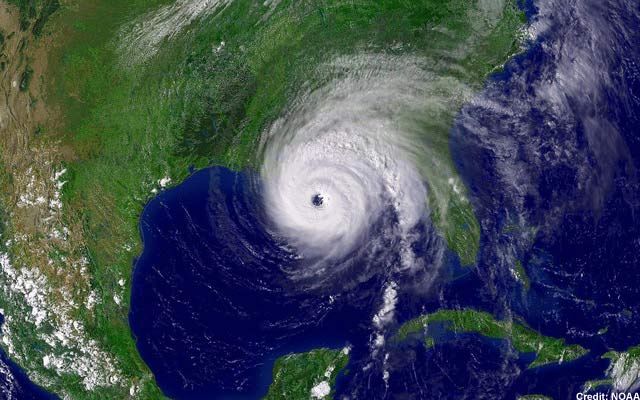Cyclones Could Save Oceanic Conveyor Belt From Global Warming

The ferocious winds of tropical cyclones churn up ocean water as they spin over the surface, significantly affecting the transport of heat in the ocean, a new study finds.
And as global warming heats up the ocean surface, this process could be intensified, preventing the potential shutdown of the oceanic conveyor belt. The intensification could also have strange effects on storms.
Tropical cyclones include tropical storms, typhoons and hurricanes—all these spinning storms are fueled by the warm waters in the tropical oceans.
The main ocean circulation, called the global conveyor belt, moves warm water from the tropical oceans to the poles along the ocean’s surface and cold water from the poles to the tropics along the ocean’s bottom. As the warm water travels northward, it becomes colder and denser until it sinks when it reaches the poles. This sinking provides the “push” in what scientists call the “push-pull” mechanism of ocean circulation.
Though no one had studied it much, scientists knew that some force must be causing the “pull” that brought water back up to the surface in the tropics.
Like mixing cream and coffee
In tropical areas, water sits in rigid layers according to density, with the densest water at the bottom and the least dense on the top (like oil floating on water)—this structure is called “stably stratified” because it is not easily mixed.
Sign up for the Live Science daily newsletter now
Get the world’s most fascinating discoveries delivered straight to your inbox.
“Something is required to break through this strong stratification,” said the study’s lead author Michael Huber of Purdue University.
That something turns out to be a tropical cyclone.
“When a tropical cyclone moves over the ocean, inside of the ocean, it’s generating waves,” Huber said.
And just like waves break on the shore, violently mixing together, these “internal waves” can break and mix together water layers of different densities. (Imagine pouring cream on top of coffee and shaking the cup—the two liquids, which have different densities, would mix together.)
This internal mixing “bring[s] cold water up, and put[s] hot water down,” Huber told LiveScience—thus providing the “pull” in the “push-pull” mechanism and accounting for about 15 percent of heat transport in the ocean. His results are detailed in the May 31 issue of the journal Nature.
An intensified effect?
The result could invigorate ocean circulation and cyclones. Here is how: By churning up cold water, tropical cyclones tend to leave a “cold wake” behind them that can depress ocean temperatures by as much as 8 degrees Celsius (about 14 degrees Fahrenheit)—a phenomenon that has been well documented by meteorologists, Huber said.
Eventually this colder water warms and returns to normal temperatures for the area, but in the meantime, it can stifle the intensification of storms trailing behind the original storm.
As global warming raises sea surface temperatures, some scientists have predicted that it could fuel tropical storms even more, either by making them more intense, making them last longer, or just making more of them.
With any of these three scenarios, tropical cyclones will churn up more cold water, Huber and his colleagues found, meaning that tropical temperatures may not warm by as much as is being predicted in climate models.
By bringing up more cold water, the cyclones will in effect be invigorating the ocean circulation, the study found, contrary to the fears of some scientists that global warming could bring a shutdown of the global conveyor belt.
But as this “pull” part of the ocean circulation intensifies, it could send more warm water to the poles, exacerbating global warming’s effect there.
While the tropics may not see as much warming as predicted for awhile, eventually, the warming will catch up with the system, and the cold water in the ocean’s depths will give out:
“As global warming continues to happen, after it happens for awhile, eventually, the water that is being upwelled, mixed up, will actually not be so cold anymore”, Huber said.
Without cold-enough water, tropical cyclones will have all the fuel they need from the tropical ocean. Though this won’t happen for several hundred years, Huber said, “there’s no question that it will happen.”
- 2007 Hurricane Guide
- Top 10 Surprising Results of Global Warming
- Images: Hurricanes from Above

Andrea Thompson is an associate editor at Scientific American, where she covers sustainability, energy and the environment. Prior to that, she was a senior writer covering climate science at Climate Central and a reporter and editor at Live Science, where she primarily covered Earth science and the environment. She holds a graduate degree in science health and environmental reporting from New York University, as well as a bachelor of science and and masters of science in atmospheric chemistry from the Georgia Institute of Technology.











